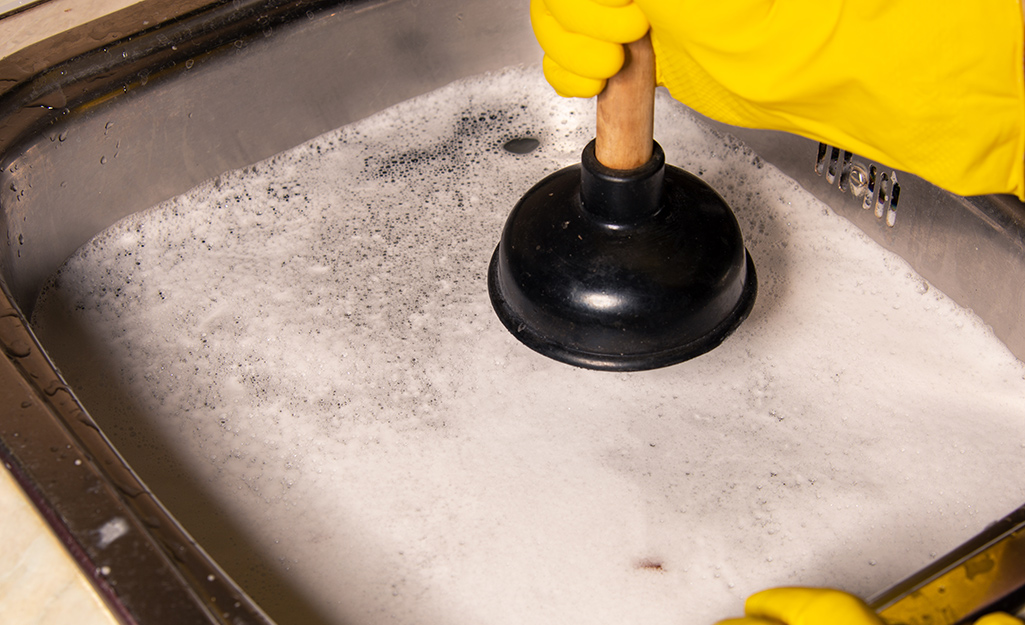Applying Plunger and Drain Cleaner: Successful Approaches
Applying Plunger and Drain Cleaner: Successful Approaches
Blog Article
Presented here in the next paragraphs you can find some awesome information all about How To Use Your Toilet Plunger Correctly in 5 Easy Steps.

Introduction
Proper upkeep of home drains is important for stopping clogs and making sure smooth water circulation. Among the trick devices in every home owner's toolkit is the bettor, alongside numerous drainpipe cleaners made to deal with stubborn clogs efficiently. This write-up explores exactly how to use plungers and drainpipe cleansers efficiently to maintain your drains flowing freely.
Section 1: Comprehending Bettors
Kinds of Plungers
There are several sorts of bettors offered, each designed for various sorts of drains pipes and clogs. One of the most usual types consist of mug plungers, flange bettors, and accordion plungers.
Just How Plungers Work
Plungers service the concept of creating stress and suction to remove blockages. When correctly applied over a drain, they produce a vacuum cleaner that can take out particles or separate blockages.
Selecting the Right Plunger
Picking the appropriate plunger relies on the type of drain and the nature of the obstruction. Mug plungers are perfect for sinks and bathtubs, while flange bettors are much better suited for commodes as a result of their design.
Common Errors with Plungers
Avoiding these blunders makes sure efficient plunging: improper seal around the drainpipe, inadequate force, and unclear bordering debris.
Area 2: Using Plungers Properly
Preparation
Before diving, make certain the plunger covers the drain completely and creates a limited seal. Clear any kind of noticeable particles around the drainpipe opening.
Method
Start with mild diving movements to build suction. Rise stress gradually, using a steady rhythm. Repeat as necessary up until the drain removes.
Repairing Tips
If diving does not function, try adjusting the seal, using petroleum jelly for a better seal, or making use of a different sort of plunger.
Section 3: Recognizing Drain Cleansers
Sorts Of Drain Cleansers
Drain pipes cleaners can be chemical or enzymatic. Chemical cleansers use strong chemicals to dissolve clogs, while enzymatic cleaners utilize all-natural enzymes to break down raw material.
How Drain Cleansers Work
Chemical cleaners react with blockages to liquify them, while chemical cleansers break down natural products like hair and oil without damaging pipelines.
Security Factors to consider
Always use gloves and eye protection when using chemical drainpipe cleansers. Make certain ample air flow and comply with producer instructions carefully.
Eco-Friendly Alternatives
Consider making use of vinegar and baking soda or enzyme-based cleansers for environment-friendly choices that are more secure for pipes and the environment.
Section 4: Using Drain Cleaning Company Successfully
Application Techniques
Pour chemical cleansers directly right into the drainpipe opening. Allow them to benefit the recommended time before purging with warm water. Enzymatic cleaners need to sit overnight.
Safety measures
Stay clear of mixing different kinds of cleansers, as this can generate toxic fumes. Never utilize chemical cleaners combined with a bettor, as spilling can take place.
Managing Persistent Obstructions
For relentless blockages, take into consideration making use of a plumbing serpent or calling an expert plumbing professional to stop damage to pipes.
Verdict
Finally, comprehending exactly how to make use of plungers and drainpipe cleansers successfully is vital for keeping healthy and balanced plumbing systems. By choosing the right devices and methods, house owners can tackle small clogs and prevent significant plumbing problems down the line.
How To Properly Use A Plumbing Snake To Clear Drains
When any drain clogs in our home arise, we tend to gravitate toward the plunger and little else. In cases where the plunger and its vacuum-created pressure are not able to clear clogs, many immediately move to harmful chemicals or simply call their plumber to fix the issue.
we’re happy to help with all drain cleaning needs and concerns. This includes informing you on a few other home remedies you may have at your disposal for minor to moderate clogs, one of which is the use of a plumbing snake. Many people have never used one of these before – let’s go over the steps to take when your drain clogs and you have a plumbing snake available.
Attempt Plunger Use
The first step here, as we noted above, should indeed be to grab your plunger when you notice a drain clog and attempt to resolve it this way. If you’re unsure how to use a particular type of plunger, our plumbers can answer any questions you have. If this doesn’t do the trick, however, you move on to the snake.
Locate And Prepare Snake
A plumbing snake is a metal or plastic device that’s generally about a quarter of an inch thick. It’s design with significant extensions, meant to reach down into your clogged drain and push the clog out. Snakes also contain drain augers that will latch onto and push stubborn blockages.
If your plunger doesn’t clear a clog, locate your snake and bring it to the drain in question. We also recommend keeping a bucket nearby to collect the clog once you pull it out, plus we’d advise wearing goggles and possibly protective gloves.
Feed Snake
Once you’re ready to go, feed the snake slowly down the drain, using the crank device it comes with to keep it moving until it finds the clog. Once this happens, much of the clog will be latched onto the coil so you can pull it out, while the rest will simply break up and flow downward.
Detach Debris
Remove the snake slowly from the drain, and once you’ve done so, pick off any debris that’s stuck to the coil. This is another area where wearing gloves is a must.
Flush Drain
Finally, take a few minutes to ensure the snake has done its job correctly. If you’ve been using it on a toilet, flush the toilet a couple times and make sure everything flows well. If you’ve used it on a different drain, flush it with some room temperature water.
https://www.mybuddytheplumber.com/blog/how-to-properly-use-a-plumbing-snake-to-clear-drains/

Application Techniques
Pour chemical cleansers directly right into the drainpipe opening. Allow them to benefit the recommended time before purging with warm water. Enzymatic cleaners need to sit overnight.
Safety measures
Stay clear of mixing different kinds of cleansers, as this can generate toxic fumes. Never utilize chemical cleaners combined with a bettor, as spilling can take place.
Managing Persistent Obstructions
For relentless blockages, take into consideration making use of a plumbing serpent or calling an expert plumbing professional to stop damage to pipes.
Verdict
Finally, comprehending exactly how to make use of plungers and drainpipe cleansers successfully is vital for keeping healthy and balanced plumbing systems. By choosing the right devices and methods, house owners can tackle small clogs and prevent significant plumbing problems down the line.
How To Properly Use A Plumbing Snake To Clear Drains
When any drain clogs in our home arise, we tend to gravitate toward the plunger and little else. In cases where the plunger and its vacuum-created pressure are not able to clear clogs, many immediately move to harmful chemicals or simply call their plumber to fix the issue.
we’re happy to help with all drain cleaning needs and concerns. This includes informing you on a few other home remedies you may have at your disposal for minor to moderate clogs, one of which is the use of a plumbing snake. Many people have never used one of these before – let’s go over the steps to take when your drain clogs and you have a plumbing snake available.
Attempt Plunger Use
The first step here, as we noted above, should indeed be to grab your plunger when you notice a drain clog and attempt to resolve it this way. If you’re unsure how to use a particular type of plunger, our plumbers can answer any questions you have. If this doesn’t do the trick, however, you move on to the snake.
Locate And Prepare Snake
A plumbing snake is a metal or plastic device that’s generally about a quarter of an inch thick. It’s design with significant extensions, meant to reach down into your clogged drain and push the clog out. Snakes also contain drain augers that will latch onto and push stubborn blockages.
If your plunger doesn’t clear a clog, locate your snake and bring it to the drain in question. We also recommend keeping a bucket nearby to collect the clog once you pull it out, plus we’d advise wearing goggles and possibly protective gloves.
Feed Snake
Once you’re ready to go, feed the snake slowly down the drain, using the crank device it comes with to keep it moving until it finds the clog. Once this happens, much of the clog will be latched onto the coil so you can pull it out, while the rest will simply break up and flow downward.
Detach Debris
Remove the snake slowly from the drain, and once you’ve done so, pick off any debris that’s stuck to the coil. This is another area where wearing gloves is a must.
Flush Drain
Finally, take a few minutes to ensure the snake has done its job correctly. If you’ve been using it on a toilet, flush the toilet a couple times and make sure everything flows well. If you’ve used it on a different drain, flush it with some room temperature water.
https://www.mybuddytheplumber.com/blog/how-to-properly-use-a-plumbing-snake-to-clear-drains/

Do you like reading up on ? Write a short review below. We will be pleased to find out your suggestions about this review. Hoping that you come back again later on. Liked our content? Please share it. Let others find it. Thank-you for going through it.
Schedule And Pricing Report this page